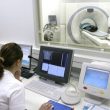The presence of calcified lesions worsens percutaneous coronary intervention prognosis, presenting more restenosis, thrombosis and need for new revascularization. The aim of this study was to assess the superiority of CTO with a prespecified management algorithm on a conventional angiography treatment, in addition to assessing CTO safety. A superiority randomized study was carried out including...
EuroPCR 2024 | Specific Intracoronary Tests Combined with Angiography for Diagnosing Patients with Chronic Coronary Syndrome: The AID-ANGIO Study
Invasive coronary angiography (ICA) has become the gold standard for the assessment of patients with chronic coronary syndrome (CCS) for obstructive coronary artery disease. However, its ability to detect this condition is limited and it does not detect non-obstructive myocardial ischemia, which can be overlooked. To address these limitations, a prospective, observational, multicenter study was...
Network Meta-Analysis of Complementary Imaging (IVUS/OCT + Conventional Angiography) for Coronary Stenting
Complementary imaging allows for the identification of numerous scenarios not visible with conventional angiography (ICA), both for the assessment of differential diagnoses and the improvement of percutaneous coronary intervention (PCI) outcomes. Advantages include assessment of plaque characteristics, vessel plaque burden, stent edge dissection, vessel diameter, and correct apposition, among others. While intravascular ultrasound (IVUS) was...
Preparation Before Elective Coronary Angiography: Is Prolonged Fasting the Only Option?
When scheduling a coronary angiography, patients are usually instructed to fast for at least 8 hours (no oral intake after dinner). However, this strategy can lead to negative effects such as discomfort, irritability, dehydration, and even hypoglycemia in some cases. Previous studies have not shown significant differences in gastric complications between patients fasting only 2 hours before...
Cardiac Angiography: Necessary for CABG Patient Diagnosis?
Cardiac revascularization surgery (CABG) has shown positive results at long term in CAD patients with multivessel or left main disease. However, we are well aware that, after CABG, there might be native disease progression over time. Also, at followup, we often see high incidence of venous graft failure. According to registry data, approximately 1 in...
AQCA Study: Pre-PCI Virtual QFR for Planning PCI vs. Conventional Angiography
Several studies have used physiological assessment after a percutaneous coronary intervention (PCI) to improve clinical outcomes. However, results are not entirely conclusive. The limitations of using these physiological assessment methods are the need for extra measurements with increased procedure time, more radiation, and more contrast, which in turn leads to higher costs. To counteract these...
ACC 2023 | RENOVATE-COMPLEX-PCI: Intravascular Imaging-Guided vs. Angiography-Guided Complex PCI
Patients with complex coronary artery disease (CAD) undergoing percutaneous coronary intervention (PCI) have worse clinical outcomes tan patients with non-complex CAD. Several studies have shown that the use of intravascular imaging (IVUS, OCT) have reduced major adverse events vs. angiography guided PCI. However, these studies present limitations both of size, studied population, short term followup...
Is digital angiography (QCA) still a useful tool in the clinical practice?
Por Dr. Ricardo Cavalcante e Silva.
FRAME-AMI: FFR vs. Angiography of Non-Culprit Vessel in ACS
This study compared fractional flow reserve (FFR) vs. angiography to guide the angioplasty of non-culprit vessels in patients with acute coronary syndrome (ACS) and multivessel disease. Landmark studies such as COMPLETE, COMPARE-ACUTE and DANAMI-3-PRIMULTI have demonstrated the prognostic value of revascularization (after treatment of the artery responsible for the ACS) of non-culprit arteries with respect...
Non-ST Elevation MI: How Long Do We Have for A Coronary Angiography?
This summary discusses the early invasive strategy and the risk of mortality in non-ST-elevation AMI. Over the past 2 decades, mortality and complications rates have seen a significant reduction thanks to technological and pharmaceutical development, and the increasing experience of health teams. This is especially true when we look at the use of coronary angiography...








